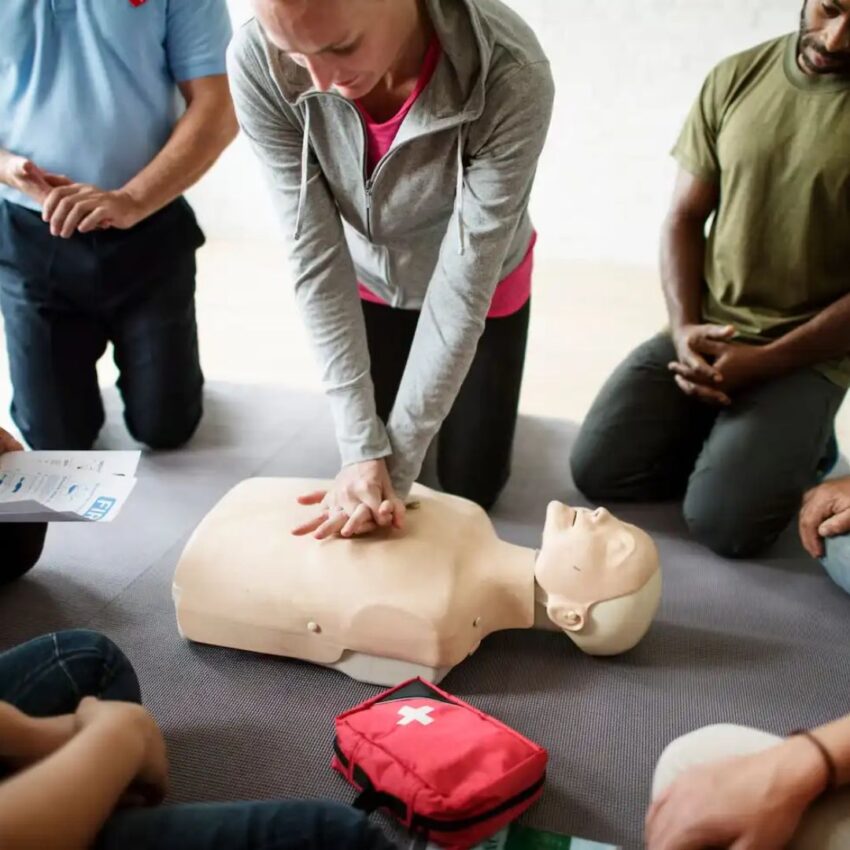When someone suddenly collapses and stops breathing, panic is the first thing that hits. Training is what breaks through that panic. It gives you focus when seconds feel like a blur. That is why people learn CPR and BLS. Both are backed by the American Heart Association, but they serve different levels of skill and responsibility. Knowing which course fits your needs can make all the difference when it matters most.
Why Certification Matters
Emergencies happen anywhere and at any time. Having the right certification means your response will not be uncertain or delayed. The American Heart Association sets the most trusted standard for lifesaving instruction. Their CPR and BLS programs are used across hospitals, schools, and workplaces because the methods are proven to save lives.
What CPR Really Teaches
CPR, or cardiopulmonary resuscitation, is where most people begin. It teaches you how to keep blood and oxygen moving until help arrives. In an American Heart Association get CPR certified course, you learn to press hard and fast on the chest, deliver rescue breaths, and stay calm through it all. The goal is not to become perfect but to act quickly and confidently when someone’s heart stops.
CPR training is built for everyday people. Parents, teachers, coaches, and caregivers take it because emergencies do not wait for professionals. The lessons are simple, practical, and focused on what actually saves lives. You leave class knowing you could step forward instead of freezing when every second counts.
What BLS Training Covers
BLS, or Basic Life Support, takes that foundation and builds on it. It is meant for healthcare professionals, first responders, and anyone who faces emergencies on the job. In a BLS training American Heart Association course, you go beyond the basics. You learn how to use a bag-mask device, work as part of a team, manage multiple patients, and handle more complex situations.
BLS is more detailed and fast-paced. It trains you to work in an environment where it is time-sensitive, informative, and requires clear communication while coordinating others to help you accomplish the task. This is the reason that hospitals, clinics, and emergency services require this training, because in those situations, precision and timing are the difference between a life saved and a moment lost.
Which Course Fits You
If you want to be prepared for emergencies at home, work, or in your community, CPR certification is usually enough. It gives you the core skills to recognize cardiac arrest, call for help, and start lifesaving action right away.
If you work in healthcare or plan to, BLS is essential. It meets professional standards and prepares you for the kind of fast-moving, high-stakes scenarios that happen in medical settings. Even if your job is not in medicine, BLS training can still be valuable. It shows a level of preparedness and composure that employers respect.
How CPR and BLS Connect
CPR and BLS are not adversarial; they are part of an overall framework of care. CPR is a basic skill that everyone should have. BLS extends the same foundation skill set but adds more advanced skills and a team approach to the basic skill set. Many medical professionals start with CPR and later transition to BLS. The most important part of either course is that both programs will, to some degree, provide you with the skill sets needed to remain calm, act quickly, and ultimately save someone’s life.
Learning with Real Guidance
At CPR Fujahn Life Support Training, classes follow the latest guidelines to help you get CPR certified American Heart Association style. The instruction is hands-on and realistic. You do not just listen; you practice until your response feels natural. The focus stays on building confidence and competence so you walk out ready to handle real emergencies, not just pass a test.
The Power of Being Prepared
When someone’s heart stops, every minute counts. Whether you take CPR or BLS, you are learning to give someone a second chance. That skill is worth more than any certificate; it can mean the difference between life and loss.
Conclusion
Deciding on CPR or BLS is not about which sounds better; it is simply a matter of which fits your responsibilities and what your goals are. CPR allows you to take action in situations we call everyday emergencies. BLS prepares you to take action in more complex medical emergencies, much more organized and coordinated. Both of these courses have been designed for the same end purpose: to help you save a person’s life when every second counts.

